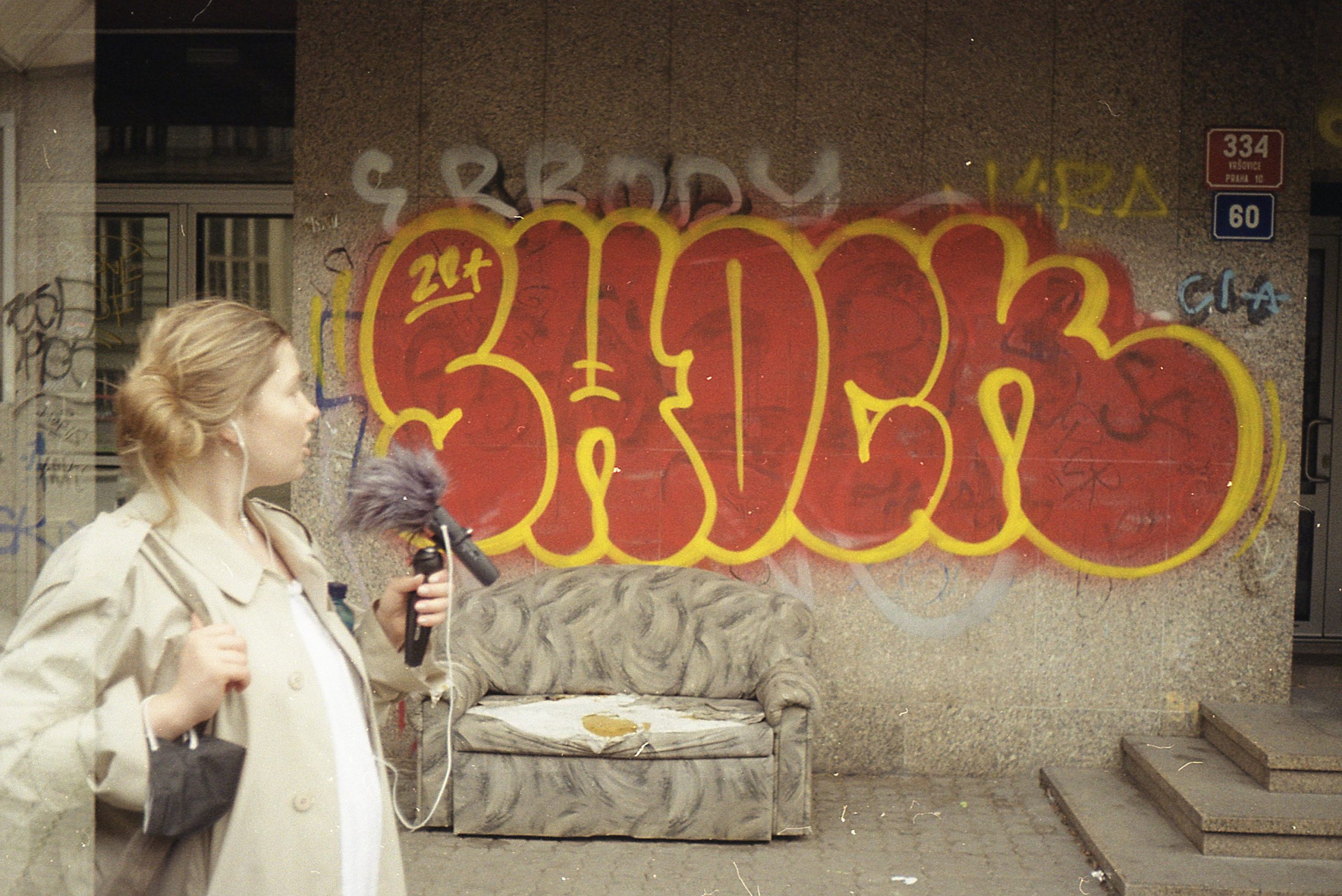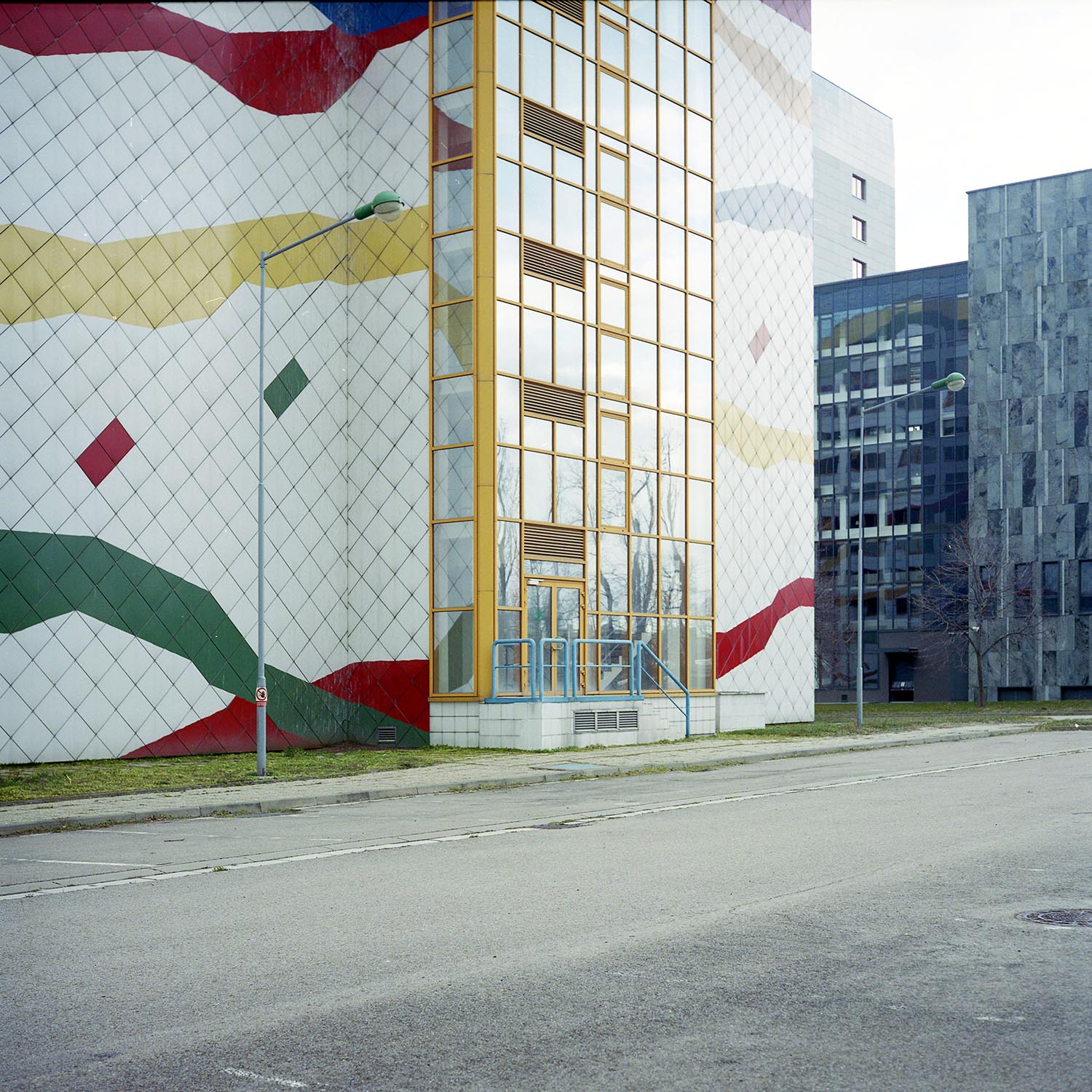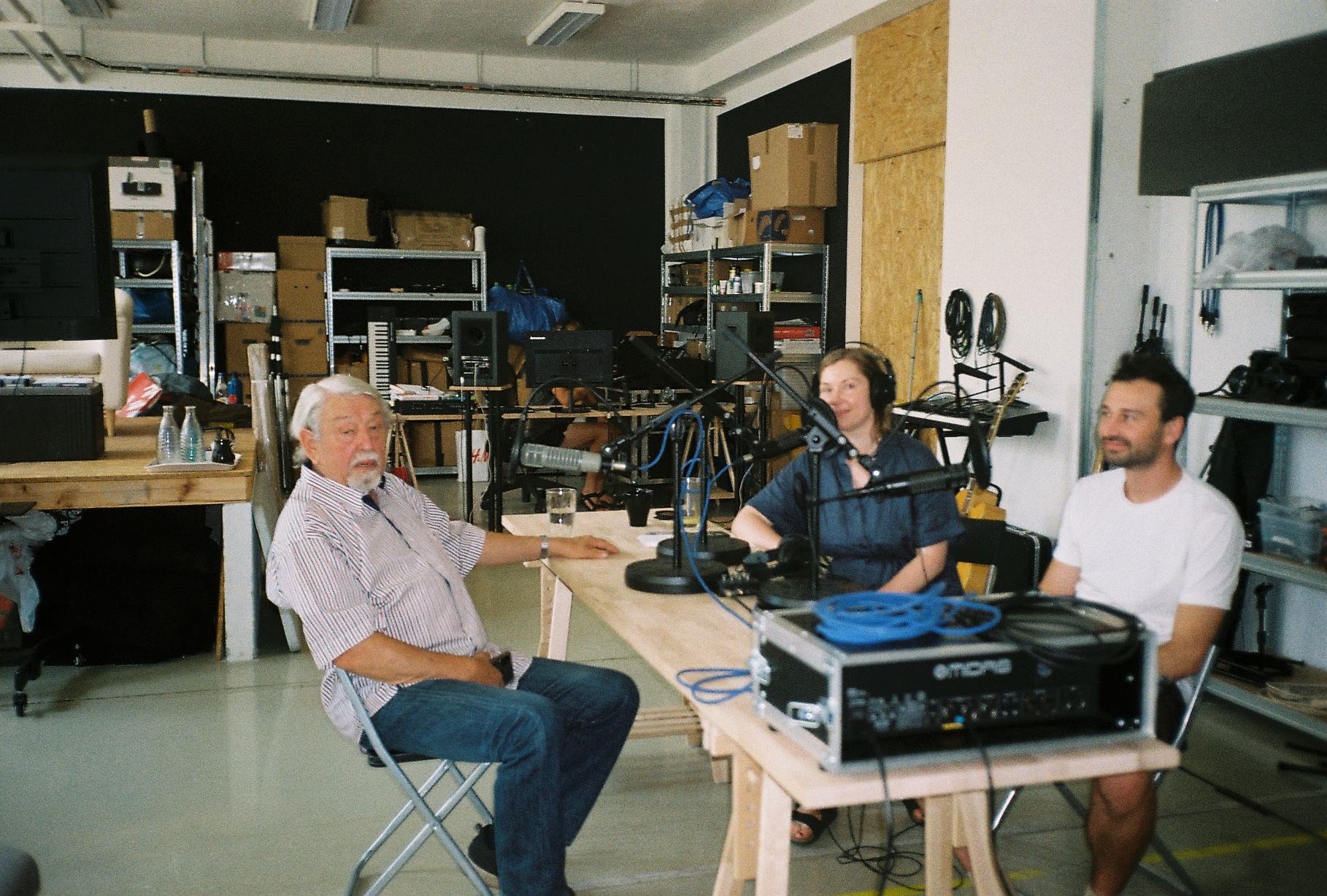Podcast / MLUVÍCÍ OBJEKTY
A podcast miniseries on architecture, focusing in six episodes on Prague buildings associated with the 1990s
In addition to the free market, democracy, mafia groups, voucher privatisations and American pop culture, the turbulent 1990s also brought a specific post-revolutionary architecture. Wild postmodernism took many forms, to which we cannot remain indifferent even today. In the podcast miniseries Mluvící objekty [Speaking Objects], architects Alžběta Žabová and Petr Bureš from the Czech collective Amulet discuss the peculiar ability of postmodern architecture to speak and surprise. In the six episodes of the podcast, they use the example of selected Prague buildings to examine not only the features of the exuberant architecture, but also the range of accompanying phenomena that were related to the socio-economic transformation after 1989. As they say themselves, the podcast is about phenomena that we can better understand through houses and places.

Integrated residential complex Moskevská, photo: Petr Bureš, source: mluviciobjekty.cz.
The podcast series takes the form of a sound collage. The authors interweave their own subjective observations with the facts of the historical context, comments by invited experts in the field of history and theory, interviews with the architects of the speaking objects or passages from the literature they read. The generally euphoric atmosphere is viewed with due criticism by the generation born in the 1990s. They go back to where the themes and problems that we still deal with in architecture today were born.

National Central Archive, photo: Petr Bureš, source: mluviciobjekty.cz.
The transition from a centrally planned economy to capitalism meant for architects, among other things, a radical change in the nature of their profession. They were no longer orderly employees of state design institutes, but self-creating personalities who built the brand of their own studios (episode 1). Although the relaxed atmosphere favored bold creative gestures, the podcast’s authors wonder how many architects working today in conditions of precarious precarity would paradoxically accept the possibility of employment in a stable design institution. The 1990s have exacerbated the inherited inequality in the representation of women in architecture. Although more and more women architects were graduating, only a minimum of them found themselves in visible positions in the sea of private studios or on the editorial boards of newly established journals (episode 5).

GoJa Pyramid, photo: Petr Bureš, source: mluviciobjekty.cz.
After the fall of socialism, many key urban themes also emerged, such as the principle of conservation. After the historic centre of Prague was inscribed on the UNESCO World and Cultural Heritage List in 1992, developers and architects were suddenly pitted against each other, and conservationists and activists were pitted against each other (episode 2). For Prague, a cheap city with good beer, the 1990s meant a boom in tourism. The masses of visitors fuelled the construction and purchase of existing hotels by global chains (episode 3). The production of hotels as backdrops for tourism, but also bank branches as temples of money, represented the so-called Portman paradox: although these buildings were intended to revitalise the city centre, they contributed to its demise. In contrast to commercial construction, state-funded projects were created, such as the example of the Pyramid at the Prague Exhibition Centre, whose architecture assumed the ability to create myth (volume 4). And while the centre of Prague was a battleground for all sorts of conflicting efforts, the periphery of the city was quietly melting into a settlement mash of catalogue houses (episode 6).
Where are the speaking objects today? Hotel colossuses have replaced authentic aribnb, the territory of Pankrácká pláň still oscillates between a vision of Prague’s Manhattan and a blind spot in the image of the city’s protected skyline, and while some iconic houses of postmodernism are gradually beginning to decay, the dream of owning one’s own house with a garden in the suburbs has not yet left many…

Interview with Václav Aulický, photo: Jonáš Richter, source: mluviciobjekty.cz.